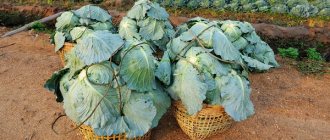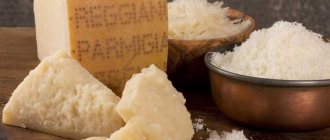Fresh parsley perfectly complements familiar dishes, gives them a piquant taste and aroma, and most importantly, contains a huge amount of useful substances. Every housewife strives to have parsley on the table not only in the summer, when all the greens grow in abundance, but also in the winter, when the season of fresh herbs, unfortunately, ends. How to prepare fresh parsley for future use?
There are several basic ways to preserve parsley for the winter:
- drying;
- freezing;
- pickling.
Dried parsley for the winter
Drying fresh parsley is quite simple, and this method allows you to preserve as much as possible all the valuable nutrients contained in the green sprigs.
The first thing to do is to sort through the bunches, removing all yellowed and darkened leaves and twigs, as well as debris and unnecessary grass. Cut off the roots and some of the thick stems.
Then the parsley needs to be washed thoroughly . It is best to take a wide dish for this, for example, a basin, fill it with cold water and put the greens in it. Let it sit for a while so that the dust and sand settle to the bottom, rinse and remove. This should be done several times, depending on how dirty the greens are.
Place the parsley on a clean towel and carefully blot the top with a napkin to remove excess water.
Then you can proceed in two ways.
The first method is to tear off the leaves from the branches and spread them on a dry kitchen towel in a thin layer. Leave to dry for several days in the fresh air, in a ventilated area, turning occasionally. Greens cannot be dried under the sun's rays, as their leaves will quickly turn yellow and lose their quality.
The second method is to finely chop bunches of washed parsley, pour onto a dry cloth, and dry as described above, stirring from time to time. It is convenient to add such greens to first courses, simply pouring the required amount at the end of cooking.
Many housewives dry parsley in the oven for the winter, because this way the process takes much less time. To do this, you need to cover a baking sheet with parchment paper and lay out leaves or chopped herbs in an even thin layer. Dry for about two hours at a temperature of 35-40 degrees, then increase to 70 degrees and leave for 20 minutes.
When drying greens in the oven, you need to take into account that under the influence of even not very high temperatures, delicate leaves may lose some of their beneficial properties.
After the parsley has dried, it should be placed in clean, dry jars or linen bags and stored in a dark place.
Benefits of parsley and contraindications
In folk medicine, the root part and shoots of parsley are used, and medicinal decoctions are prepared based on them. Parsley is taken for diseases:
- stomach;
- duodenum
- liver;
- kidney;
- organs of the genitourinary system;
- thyroid gland.
Note. Parsley stimulates appetite, normalizes metabolism, strengthens blood vessels, stops inflammatory processes, and has a good effect on visual acuity and the condition of the gums. In cosmetology, decoctions are used to stimulate hair growth and strengthen hair follicles.
Contraindications for use:
- diseases of the bladder, stomach, liver and kidneys in the acute stage;
- increased tone of the uterine muscles during pregnancy;
- exceeding the recommended dosage when preparing and consuming medicinal decoctions leads to dizziness, nausea, and vomiting.
Freezing fresh parsley for the winter
Frozen parsley also retains all its qualities, fresh taste and wonderful aroma well. If you freeze it in bunches, you can use the branches to decorate dishes, and if you cut it, you can simply add the prepared greens to your dishes according to your taste.
To begin, the sprigs of greenery should be sorted out and washed well , as described in the drying method. Place on a dry kitchen towel and blot off excess moisture. Transfer to another napkin and let dry slightly. The greens should be dry, but they should not be allowed to wilt.
Now you can separate the parsley into small bunches and put each bunch in a bag. Roll the bags into rolls, pressing lightly to release the air. Place everything in a container or bag and put it in the freezer. In winter, greens in such bunches can be cut without defrosting, or the branches can be used for decoration.
Another way is to immediately cut the prepared greens , put them in a container and freeze . All you have to do is take it out of the freezer, add it to a dish and enjoy the fresh aroma of summer.
You can freeze parsley in portions. To do this, clean and dried greens must be finely chopped and placed in molds for making ice cubes. Then fill the cubes with water and freeze, then transfer to a bag and store in the freezer. These cubes are very convenient to throw into first courses or stewed vegetables.
You can freeze parsley in oil in a similar way. Melt the butter and pour in the chopped herbs placed in ice trays. Freeze and store in the same way as ice cubes. In winter, such a cube will be good to put in soup or stew, and if you wait until the butter melts, you can make a fragrant sandwich .
When to collect greens?
When collecting parsley for harvesting, you should consider several important points:
Harvested greens
- Cut greens before flowering. At this time, the leaves are soft and fragrant, and the plant itself retains all its beneficial substances in the leaves and stems.
- Collect grass in sunny weather, after the morning dew has dried.
- After harvesting, immediately sort through the parsley, discarding dry and yellowed branches.
Before harvesting, regardless of the method chosen, the greens must be washed thoroughly and poured into a colander. Then spread the grass on a kitchen towel and leave until completely dry.
Pickling parsley for the winter
This method of preserving parsley was once very popular, but with the advent of powerful freezers that could hold large quantities of fruits, vegetables and various herbs, it has slightly lost its relevance. But even now, many housewives prefer to pickle herbs for the winter. After all, salt is an excellent preservative , which allows greens to remain fresh for a long time and not spoil.
For pickling, you need to take one tablespoon of table salt for one large bunch of parsley. Sort through the greens, rinse well, cut off the roots and thick stems and dry lightly. Grind with a knife or in a blender, place in a clean bowl, and mix well with salt.
Then place tightly in prepared dry jars, filling them to the top. These greens should be stored in the refrigerator, scooping with a clean spoon as needed. Before you start cooking, do not forget that the greens are already well salted and put a little less salt in the dish.
In addition to the main ways to preserve parsley for the winter , there are several more not so common ones.
How to properly store in the refrigerator
The refrigerator is a universal place for storing parsley, the temperature regime of which will help prevent spoilage of the healthy product.
There are several options for storing the product, depending on its packaging and containers for placement:
- Wash the leaves thoroughly in cool water, dry them, spreading them evenly on a dry towel in one layer. Then pack it in a container or glass jar and seal it tightly. You can store parsley this way for about a month.
- Sort the greens, rinse, dry and place in a plastic bag. Take some air into it and tie it tightly. Shelf life - no more than 14 days.
- Wrap the peeled fresh herbs in thick kraft paper, or you can also use a paper towel. Spray it with water using a spray bottle. Place the package in a clean plastic bag. Parsley can be left in this form in the refrigerator for a maximum of 2-3 weeks.
- Wash the parsley under running water, trim the roots of the plant and place cut side down in a small jar filled with water. To be safe, cover with a plastic bag and do not forget to change the water every 2 days. Shelf life is about a month.
- Sort through the greens, but avoid contact with water. Place in a strong plastic bag along with an unpeeled small onion, cut into 4 pieces. Tie the container tightly and place in the refrigerator. Don’t forget to take out the greens every 5 days, wipe the bag dry and add new onions. Greens can stay fresh for more than a month.
Each method of storing parsley in the refrigerator has its own characteristics and advantages. Housewives give preference to the first three options, considering them the most convenient and fast, which is extremely important in the kitchen.
How to store parsley in the refrigerator:
Cooling in cans
As in the previous methods, the parsley must be sorted, unsuitable branches and thick stems removed and thoroughly washed several times in cold water . Let the water drain, dry with towels, then in the air - the greens should be completely dry!
Wash and dry small jars well, fill them without compacting them with herbs and close tightly with clean lids. You can use jars with screw caps. These greens can be stored in the refrigerator for about three months. The advantage of this storage is that the parsley remains absolutely fresh; it is perfect for decorating both everyday and holiday dishes.
And finally, some practical tips that will help housewives learn how to preserve parsley for the winter:
- It is better to prepare young parsley by collecting the greens before the plant blooms, since young greens are more tender, dry quickly, and have a brighter taste and aroma.
- It is better to freeze in small bunches in order to use them immediately, because greens thawed several times lose their properties and appearance.
- If the bunches turn out to be large, you can take the bunch out of the freezer, quickly cut off the required amount with a knife, and put it away again. Frozen parsley is tender and easily cut with a sharp knife.
- Having taken out a jar of chilled parsley from the refrigerator, you should quickly take as much as you need, trying to ensure that as little warm air as possible gets into the jar. Immediately close the lid and put it back in the refrigerator.
- Jars of frozen and chilled greens are stored not in the freezer, but in the refrigerator. Therefore, when harvesting parsley using these methods, you need to provide the necessary space for them.
- Well, the least amount of space in the kitchen will be taken up by canvas bags with dried herbs. In a cabinet where it is dry and dark, it will be perfectly preserved for a long time.
Method two - drying greens
Dried grass, like frozen grass, does not lose its beneficial and spicy qualities when harvested. In addition, it is more convenient to store dried parsley, since the product will significantly decrease in size when dried. And a summer spice added to any dish in winter can improve the taste and aroma of the dish.
Drying herbs naturally
Let's take a closer look at how to dry parsley naturally, without using special equipment or an electric dryer.
Ingredients:
- Grass – 10 bunches.
Process for preparing dried spices:
- Rinse the collected greens with running water and dry on towels.
- Separate the green twigs from the stems. Scatter the greens on a towel or paper in an even layer.
- Place the workpiece in a well-ventilated and dry place. Dry the grass for two days. Stir the leaves periodically to ensure even drying.
- Place the dried herbs in a glass container and seal with a lid. Store parsley in a cool, dark place away from other spices so that the herb does not become saturated with foreign odors.
Drying herbs in the oven, microwave, electric dryer
You can dry parsley not only in the air, but also by using the oven. In this case, you can dry the green leaves either separately or together with the tails or roots. For this:
- Prepare the greens in advance in the same way as the previous recipes. Cut the rhizomes into small cubes or circles.
- Heat the oven to 60 degrees.
- Pour the parsley preparation onto a baking sheet wrapped in parchment. Place the sheet in the oven. Stir the greens periodically.
Dried parsley
Attention! Keep the door slightly open when drying.
- The degree of readiness of a spice is determined by its appearance.
- After drying, place the greens into glass jars and seal them with lids.
Similarly, parsley can be dried in an electric dryer at a temperature not exceeding 60 degrees in order to preserve the maximum of the beneficial substances that make up the herb.
Attention! You can dry the greens in the microwave at maximum power. In this case, the drying process will take 5-6 minutes. After this, the dried herb should be ground with your hands and poured into sealed containers with lids.
Preparing parsley for storage
Most types of green grasses have very thin and delicate covering tissue that does not retain moisture well. For this reason, even large leaves, such as lettuce, sorrel or spinach, quickly lose their juiciness and wither. In order not to be upset about a spoiled product, you need to take into account all the nuances and remember how to store fresh herbs of different varieties. Before storing the grass, it needs to be prepared. If you want to prolong the freshness of green onions, garlic, parsley or dill, it is not advisable to wash them first.
Use a dry cloth to remove any remaining soil from the bunches and remove any yellowed leaves. If heavily soiled, you can rinse the herbs in a basin or deep bowl, but not under running water. Then dry them well: shake them off carefully, lay them on a towel, blot off excess water and leave to dry for half an hour. After the grass has dried, it is ready for long-term storage.
Parsley in oil
This method of harvesting parsley involves the use of purified sunflower oil, which will become a natural preservative that protects the greens from spoilage. Thus, you can extend the shelf life of the green product to 3-4 months.
Ingredients:
- Greens – 300 g
- Oil – 200 ml.
The process for preparing greens in oil is as follows:
- Wash the harvested greens and dry with towels.
- Chop the parsley with a knife.
- Place the chopped herbs in a jar.
- Fill the contents of the jar with hot (heated in a water bath) vegetable oil to the top, leaving no air bubbles inside the container. Close the container with a lid.
The proposed method will preserve the appearance, taste and aroma of fresh herbs. The preparation is ideal for subsequent use in salads, meat dishes or mayonnaise sauces.
Beneficial properties of parsley
Fragrant green leaves are an inexhaustible source of vitamins, including vitamin D3 and minerals, thanks to which a person is protected from illness, stress, depression, and creates mood and peace of mind.
Positive properties:
- strengthens the immune system;
- reduces the amount of salt in the body;
- reduces the risks of developing diabetes and cancer;
- stabilizes the functioning of the heart muscle;
- strengthens bone tissue;
- improves the functioning of the digestive system;
- restores thyroid function;
- suppresses the feeling of hunger;
- increases potency.
30 g of chopped parsley will increase the content of vitamins B in the body by 10%, C by 50%, K by 550%.
Attention! Parsley is not only a decoration for dishes and an aromatic spice, but also a supplier of minerals necessary for the normal functioning of the human body.
Harvesting and harvesting greens
Parsley is not difficult to grow and harvest. If you follow the harvesting rules, the harvest will be tender and aromatic.
How to harvest parsley:
- For harvesting, choose bushes no older than one year. Sometimes the leaves are removed from older plants, but then the parsley is less fragrant.
- Greens are cut at the root. If you remove only the top, new lush stems will no longer appear.
- The foliage is cut off from the outside of the bushes. With this technique, the old outer leaves do not have time to deteriorate. And the plant will focus on creating and developing new shoots.
- The harvest is constantly being harvested, which helps parsley to grow for many months. Therefore, a fresh harvest will be at hand at any time.
- Before frost, the crop is completely harvested. Unprotected greenery should not be left outside in winter. Otherwise the culture will die.
Important! It is better to eat greens fresh, as the spicy aroma of parsley weakens during storage.
How to tell if parsley has gone bad
All preparations must be inspected periodically throughout the entire storage period. Dried parsley is considered spoiled if it begins to turn black or has mold in it. Removing only part of the product will not help, because harmful spores spread throughout the entire mass.
The pickled spice has gone bad if the color of the brine has changed. If it turns white, the product should be thrown away. The same thing happens with the workpiece in oil. Spoiled, salted and frozen parsley begins to turn black.











